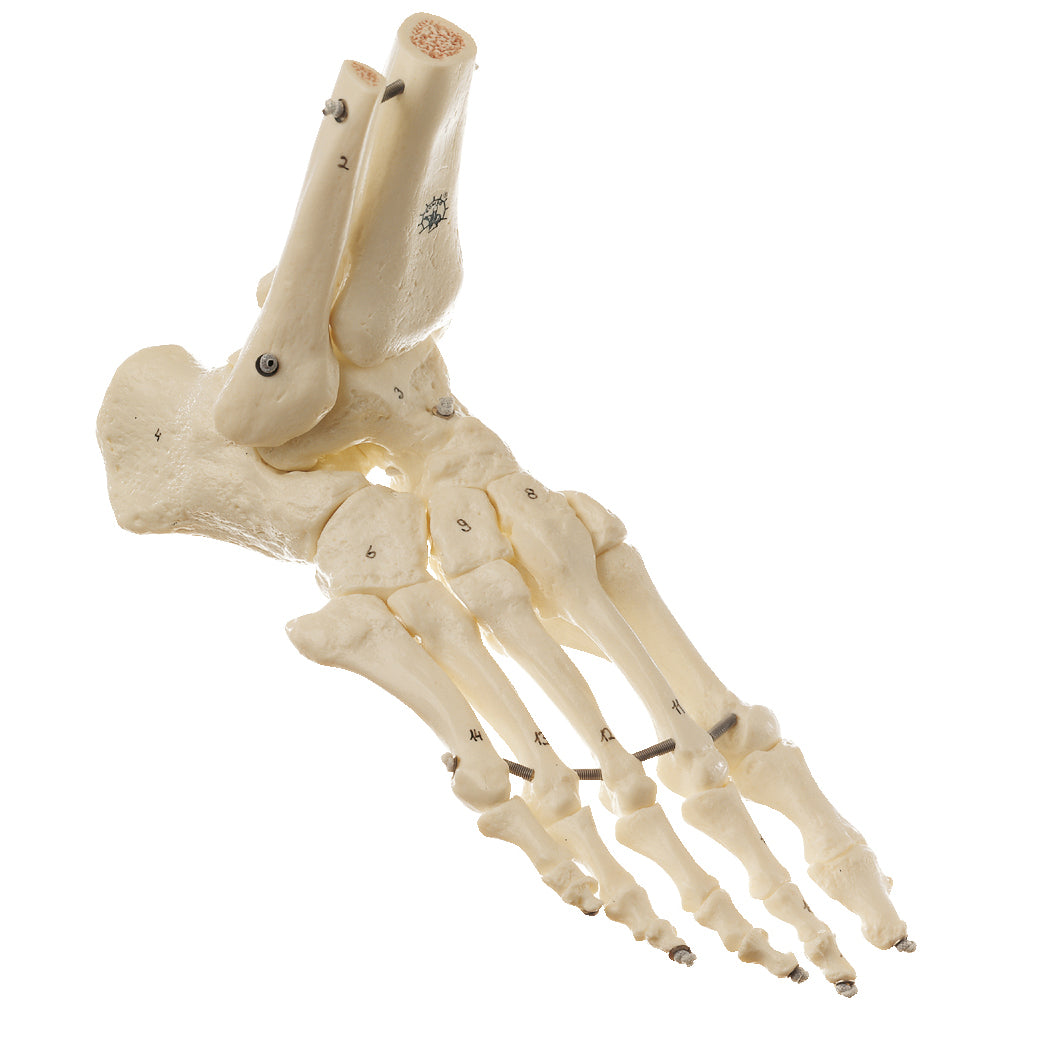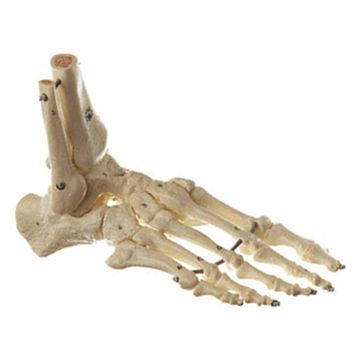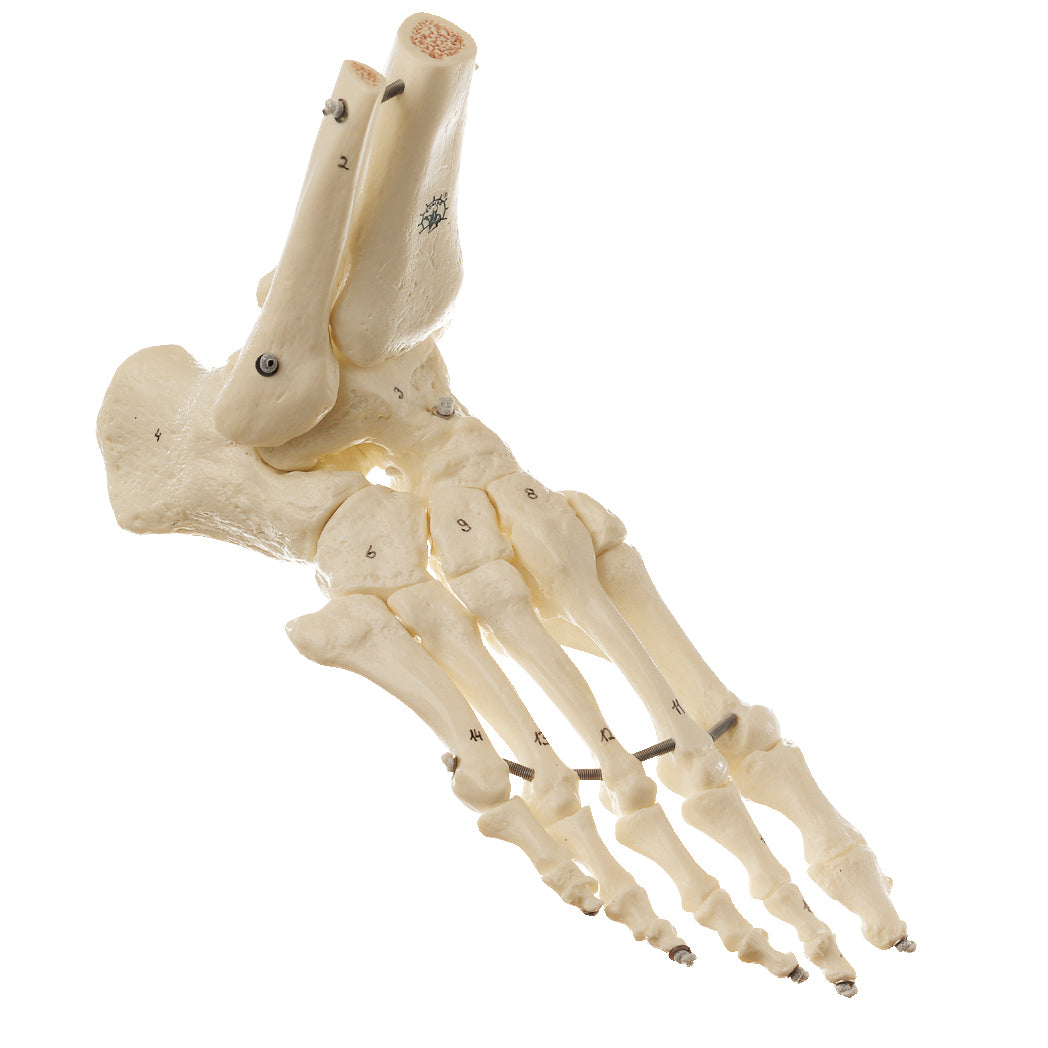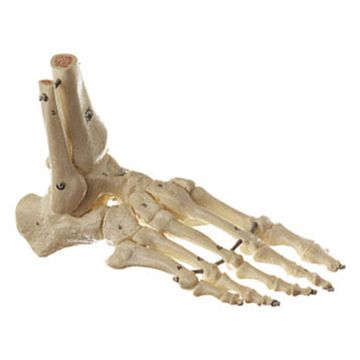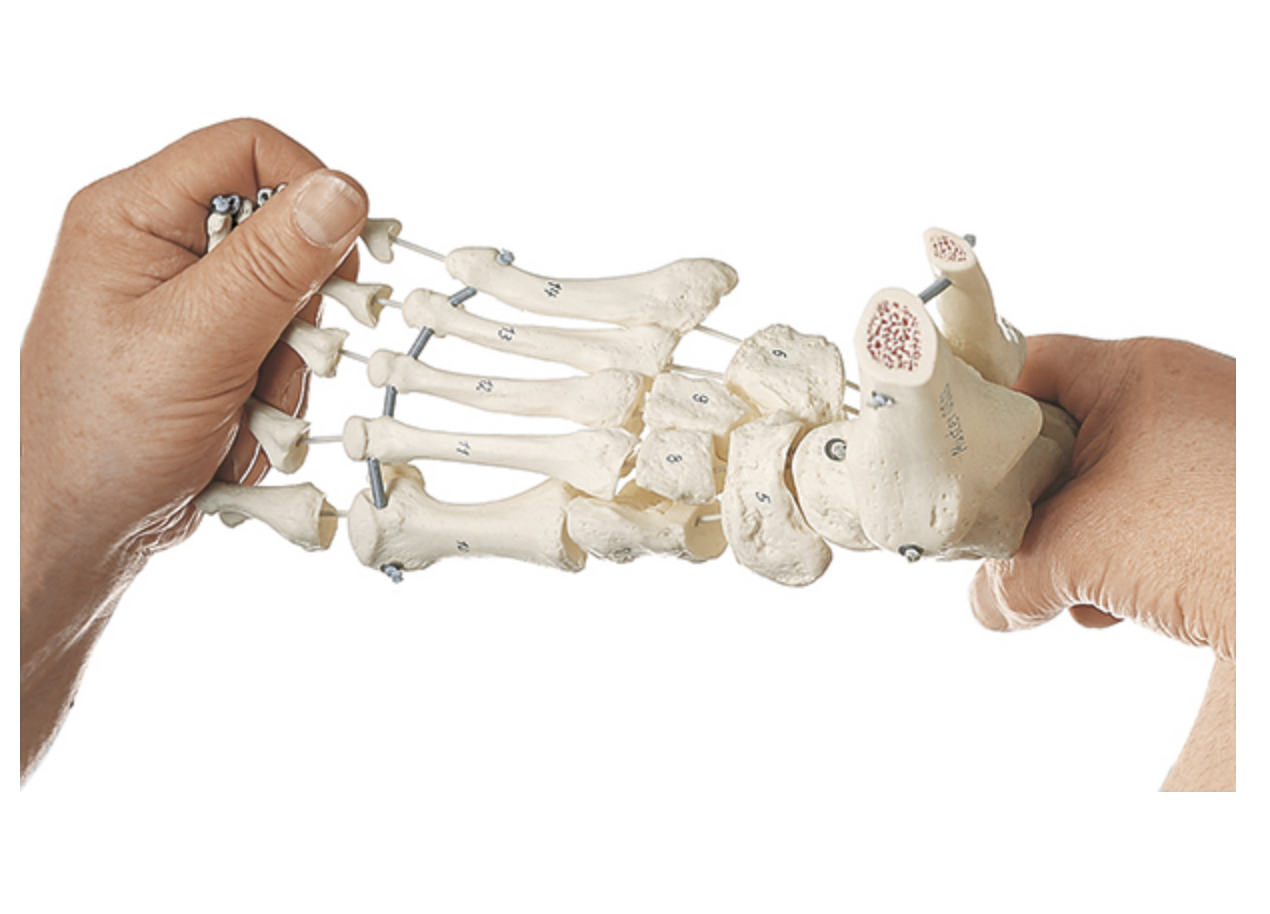SKU:EA-QS 23
Extremely flexible model of the skeleton of the foot with extremely realistic bone tissue
Extremely flexible model of the skeleton of the foot with extremely realistic bone tissue
Out of stock
this product is made to order. To place an order please call or write us.Couldn't load pickup availability
This foot model shows the foot and some of the lower leg bones in life size.
The model is produced in SOMSO plastic by the manufacturer SOMSO, which is world-renowned for very high quality. This means quality materials, a sense of accuracy and longevity.
The model is produced in natural size. It weighs 0.44 kg and the dimensions are
26 x 10 x 15.5 cm (length x width x height). On this foot model, the bones are held together by relatively thick elastics.
The model's bones are numbered and named with Latin names on the accompanying chart.
Anatomical features
Anatomical features
Anatomically speaking, the foot model shows a bit of the tibia, a bit of the fibula, the entire foot (pedis) with the 26 bones and the sesamoid bones. The model therefore only shows bones and joints.
The bone structure is extremely realistic. In relation to similar foot models, even the smallest "osseous landmarks" such as knots and depressions are visible.
Product flexibility
Product flexibility
In terms of movement, this model is extremely flexible. Although the bones are held together by elastics, the foot always has a fixed shape. However, one can easily change the foot position and pull the bones apart so that the joints can be moved and their surfaces can be studied.
This particular flexibility makes it possible to demonstrate virtually all movements of the foot.
You can thus use the model to demonstrate the most important movements of the foot:
The angular movement "plantarflexion-dorsiflexion" which is primarily performed in the ankle joint (the talocrural joint between the lower leg bones and the root of the foot)
"Inversion-eversion" which takes place primarily in the lower ankle joint (the subtalar joint under the talus/talar bone)
"Plantarflexion-dorsiflexion" in the base, middle and outer joints of the 1st - 5th toe
Clinical features
Clinical features
Clinically, this model is ideal for understanding many types of ankle fractures, metatarsal fractures and toe fractures.
It is also ideal for understanding luxations (slip joints) and foot deformities such as flat feet, club feet, metatarsus varus, hallux valgus (big toe bunion), hallux rigidus and hammer toe.
The model can perhaps also be used to understand disorders such as osteoarthritis in the foot (arthrosis) and rheumatoid arthritis (rheumatoid arthritis).
Share a link to this product

A safe deal
For 19 years I have been at the head of eAnatomi and sold anatomical models and posters to 'almost' everyone who has anything to do with anatomy in Denmark and abroad. When you shop at eAnatomi, you shop with me and I personally guarantee a safe deal.
Christian Birksø
Owner and founder of eAnatomi ApS

